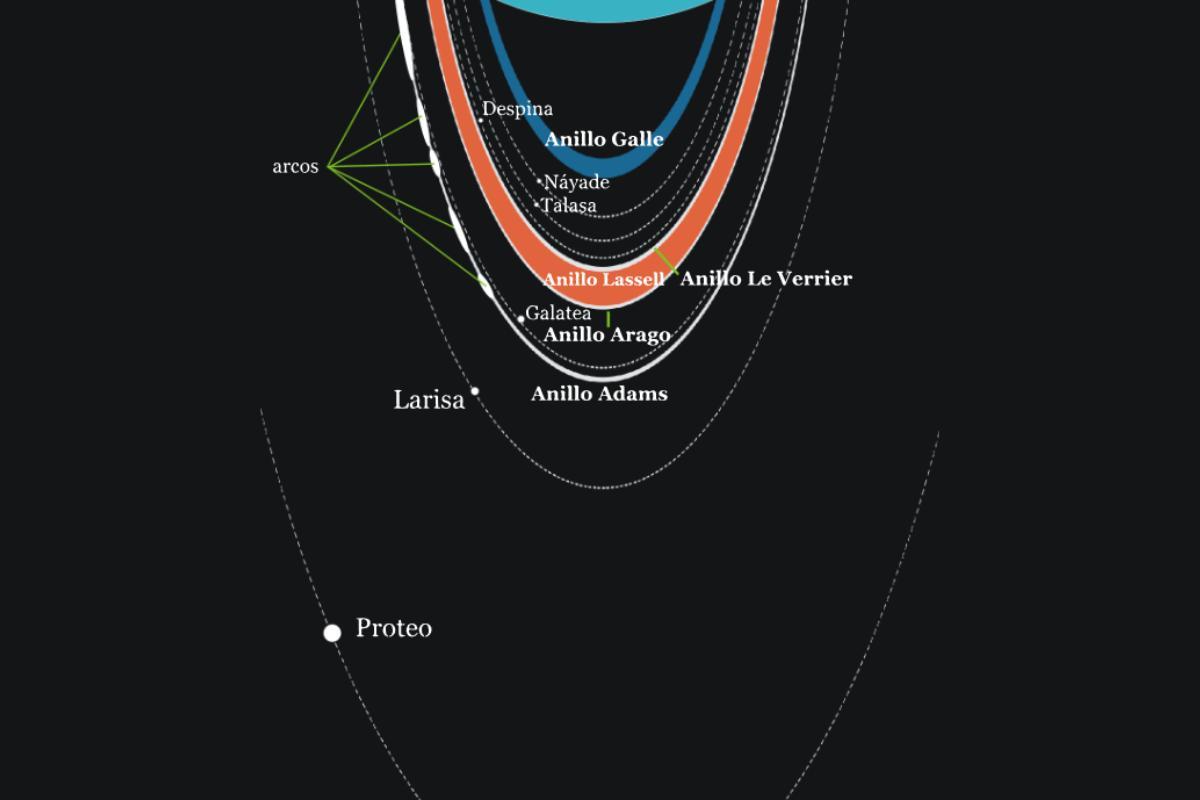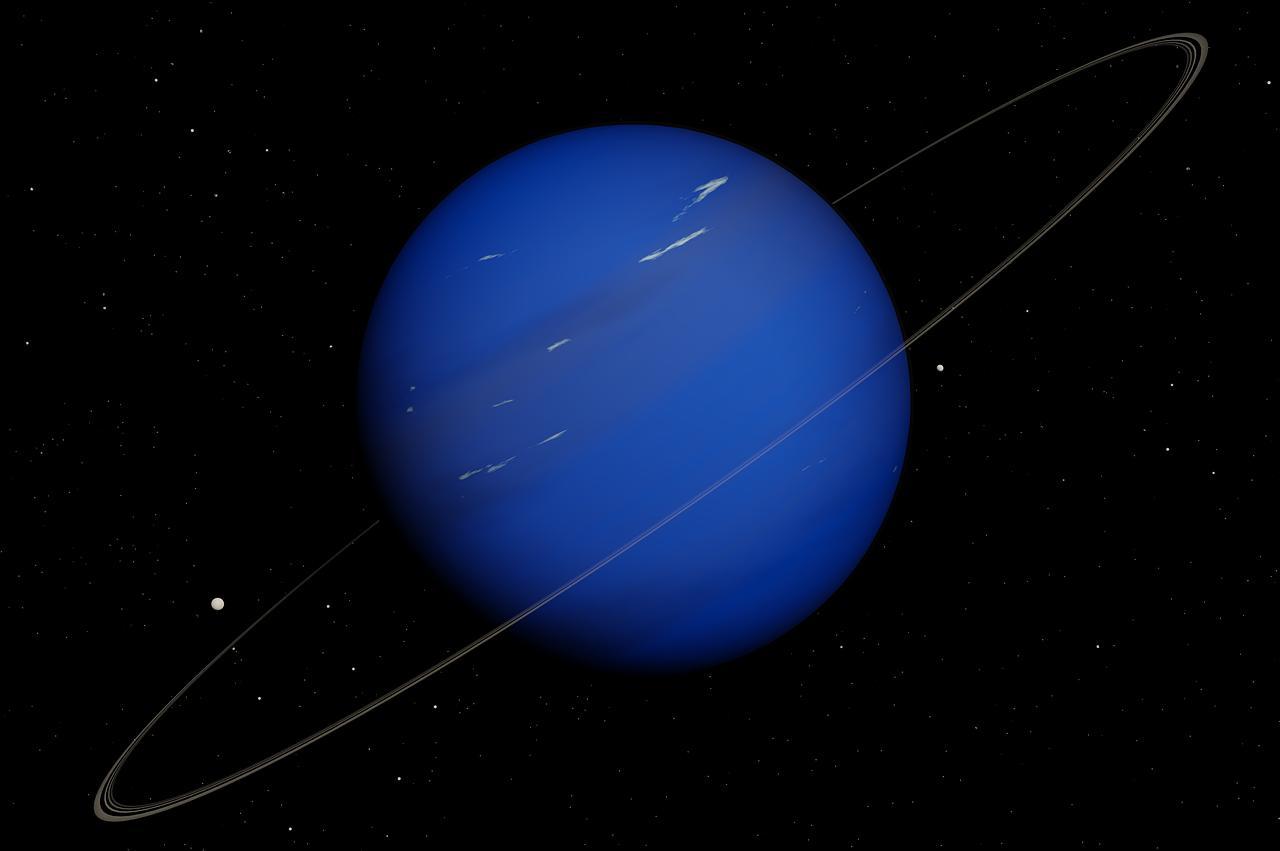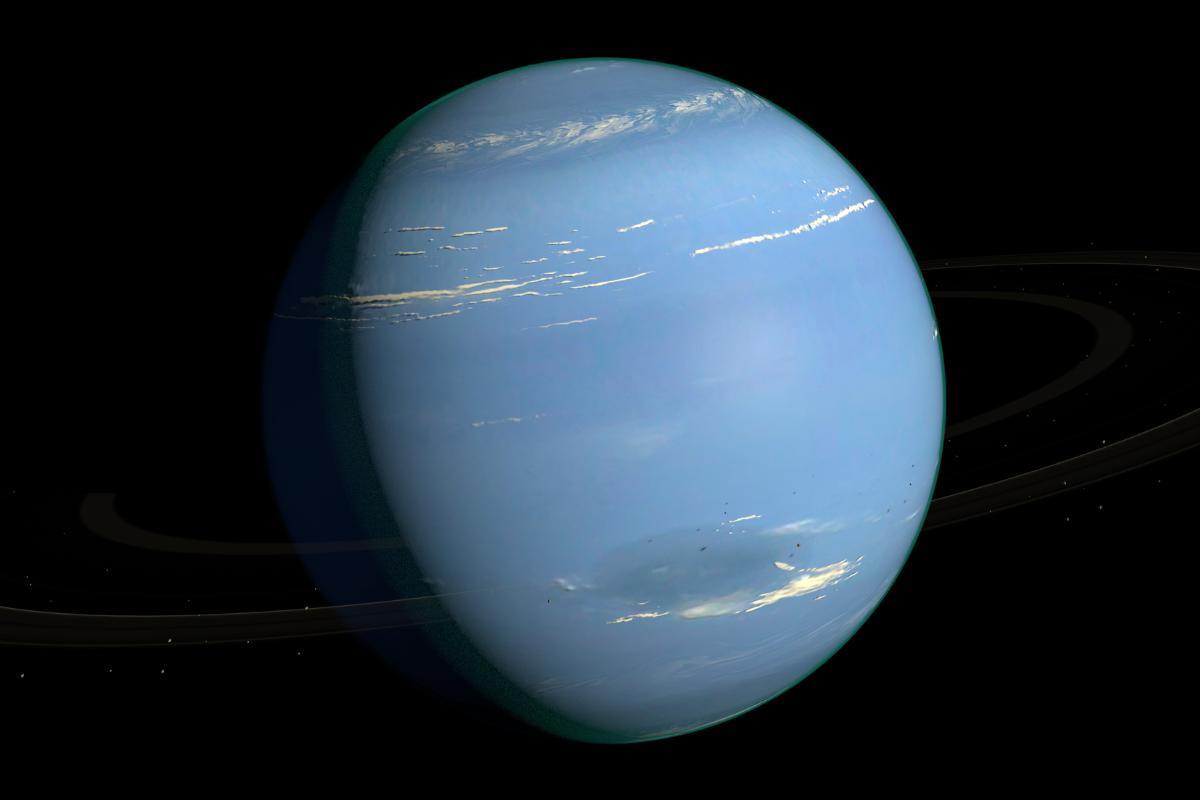Rings of Neptune - Names and Composition


Although we may associate rings most with the planet Saturn, Neptune has five rings called Galle, Le Verrier, Lassell, Arago and Adams. Characterized by its intense blue color and its winds that are stronger than hurricanes, Neptune is the planet in our solar system furthest from the Sun. Study of this planet is difficult due to its great distance away from Earth, but certain space missions have revealed data which have taught us more than we could have thought possible about Neptune and its rings. thedailyECO explains more as we provided what you need to know about the rings of Neptune names and composition.
How many rings does Neptune have?
Neptune is the eighth planet in the solar system and is named after the Roman god of the seas. The third largest in mass and fourth in diameter, it has a very intense blue color. Its atmosphere has the strongest winds in the entire solar system, reaching about 2,000 kilometers per hour. It is composed of hydrogen, helium, methane and ammonia. It is also considered a ringed planet.
When were Neptune's rings discovered?
We know about the rings of Neptune thanks the Voyager 2 space probe launched by NASA. As part of the Voyager program, the probe has traveled throughout our solar system to retrieve information we could have never previously reported.
After traveling over 4 billion miles, Voyager 2 encountered Neptune where it used 10 of its state-of-the-art instruments to report various data about the planet. Not only did Voyager 2 discover that Neptune had rings, it also discovered 5 moons and a ‘great dark spot’. The latter is a dark spot larger in diameter than our own Earth which is believed to be a hole in the methane cloud of the planet.
Voyager 2 discovered that Neptune has 5 rings. This ring system has various satellites which orbit around them, including Neptune's moons.
What are Neptune's rings made of?
The composition of Neptune's rings are ice particles, silicates and organic compounds produced by radiation from the magnetosphere. The rings of Neptune and Uranus are relatively young and are probably much younger than the solar system itself. Both are believed to have been caused by the fragmentation and subsequent collision of the remains of Neptune's inner satellites.
The names of the 5 rings of Neptune from the innermost to the outermost are:
- Galle
- Le Verrier
- Lassell
- Arago
- Adams
Learn more about the surroundings of planets with our article on the Earth's magnetosphere function.

Galle
The Galle ring is the innermost ring of Neptune. Its location is 42,000 km from the center of the planet. This makes it very wide and it is mainly made up of small ice particles. It was named after Johann Gottfried Galle who was the first to observe Neptune through a telescope which he did in 1846.
Le Verrier
Named after the French astronomer Urbain Le Verrier, who predicted the existence of the planet Neptune, the Le Verrier ring is a narrow ring that lies about 53,200 km from the planet. This has a length of about 113,000 km and is composed mainly of dust and ice particles.
Lassell
The Lassell Ring is located approximately 55,000 km from Neptune itself. It is faint and has a width of about 2,000 km, making it Neptune's widest ring. It is made mostly of ice particles and is named after William Lassell, the English astronomer who discovered Triton, Neptune's largest moon.

Arago
Located about 57,000 km from Neptune, the Arago ring is a narrow, bright ring that is about 43,000 km long. Its name is in honor of François Arago, a French astronomer who discovered the phenomenon of the rotation of Venus.
Adams
Named after John Couch Adams, credited with the co-discovery of Neptune, the Adams Ring is the farthest ring from Neptune. It lies about 62,900 km from Neptune itself. It is 35,000 km wide and is composed mainly of ice and dust particles.
One of its distinctive features is that it possesses five glowing blue arcs named Fraternity, Equality 1, Equality 2, Liberty and Courage. The arcs occupy a small orbital length of the total ring.

Facts about Neptune and its rings
Now we know the names and composition of Neptune's rings, we can look at some fun facts about Neptune in general:
- It is a very cold planet: Neptune orbits at a distance very far from the Sun and therefore receives very little heat. Its surface temperature is −218 °C. However, the planet seems to have an internal source of heat produced by the concretion of matter during its creation. It is very likely that this remnant of heat is slowly being radiated into space.
- It is a blue planet: Neptune is blue due to the presence of methane gas in its atmosphere. The absorption of red light by atmospheric methane is part of what creates this distinctive blue color.
- It has the fastest winds in the solar system: Neptune's winds are the fastest ever recorded in the solar planetary system. Speeds of over 2,400 km/h were measured around the Great Dark Spot.
- It has a very active cloud system: phenomena such as hurricanes that have a diameter equal to that of planet Earth and other cloud formations, such as extensive cirrus clouds, occur on Neptune. For this reason, Neptune has a very active cloud system, possibly larger than Jupiter's.
- It has a strong magnetic field: Neptune's magnetic field is generated by a solid iron core located in the center of the planet and is approximately 27 times stronger than the magnetic field of planet Earth.
- It had a large dark spot: Neptune's Great Dark Spot was similar in size to planet Earth and was similar to Jupiter's Great Red Spot. It was detected in 1989 by NASA's Voyager 2 spacecraft. Closer observation revealed that it was a dark depression in Neptune's atmosphere. In 1994 the spot disappeared and it is not yet known if it was because the hole was completely covered or because it was a storm that ended.
Now you know more about Neptune, its rings and other fun facts, we can discover more about our universe with our articles on what are celestial bodies and how many moons does Mars have?
If you want to read similar articles to Rings of Neptune - Names and Composition, we recommend you visit our Facts about Earth and the universe category.
- López-Gómez, FF (2017). "Historical overview of the study of the planets of the solar system".








